Padua Sights – Attrazioni di Padova
- Maria Scuor
- Sep 20
- 24 min read
Italian under each section
We spent a couple of days in Padua (Padova in Italian), the capital city in the province of Padua and region of Veneto. It is the 14th largest city in population with 206,246 inhabitants. It has been confirmed that there have been prehistoric settlements starting from the 11th century BC to 10th century BC. Of course, like all towns in Italy, there is a legend that the foundation took place in 1132 BC by Antenor, a trojan prince who escaped the destruction of Troy.
During the 4th century BC, the area had to defend itself from repeated attacks by Gauls (Celtic people) and by the 1st century Patavium (Padua in Latin) became a municipality and was the riches city in Italy after Rome. Like all towns in Italy, the territory was claimed by many different entities but also it was burned, flooded and had earthquakes that caused havoc.
In 1222, during the municipal period, the city was rich and founded the University of Padua, which is the 5th oldest in the world. With the presence of the lordship of the Carraresi or Da Carrara family in 1318, Padua’s economy and the arts began to flourish. However regional wars meant the territory changed lordships hands over and over again. In 1405, in the war of Padua the city was defeated by the Republic of Venice, which gave them four centuries of peace and enjoyed prosperity and freedom was guaranteed to its university. This attracted students and teachers from all over Europe, and became a major center of Aristotelianism (doctrine and philosophy of Aristotle) and brought intellectuals such as Galileo Galilei to Padua.
In 1509, Padua endured the War of the League of Cambrai however it was repelled and after that danger, the Serenissima (Republic of Venice), fortified the city by building the walls, which still remain today. After the fall of the Serenissima in 1797 the city was ruled by Napoleon, Austria, Habsburg Kingdom of Lombardy-Ventia and again by Austrian rule. However, by 1866 it became part of the Kingdom of Italy, following the third war of independence.
Padua was the headquarters of the Italian military forces in the First World War and during the Second World War, it became an important centre of resistance against Nazism and Fascism. Many university teachers and students took part in the partisan struggle and for this reason the University of Padua was awarded the gold medal of Military Valor, the only university in Italy to receive this honour. By the 1970s Padua’s student community was linked to extremism of fringe groups which carried on into the 1990s.
Today Padua has two World Heritage Sites by UNESCO: the botanical garden, which is the oldest in the world and the fresco from the 14th century, preserved in eight building complexes including Scrovegni Chapel.
Abbiamo trascorso un paio di giorni a Padova, capoluogo della provincia di Padova e della regione Veneto. È la 14ª città più grande della popolazione con 206.246 abitanti. E' stato confermato che ci sono stati insediamenti preistorici a partire dall'XI secolo a.C. fino al X secolo a.C. Naturalmente, come tutte le città d'Italia, c'è una leggenda secondo cui la fondazione avvenne nel 1132 a.C. da parte di Antenore, un principe troiano scampato alla distruzione di.
Durante il IV secolo a.C., l'area dovette difendersi dai ripetuti attacchi dei Galli (popolo celtico) e dal I secolo Patavium (Padova in latino) divenne un municipio e fu la città più ricca d'Italia dopo Roma. Come tutti i paesi d'Italia, il territorio è stato rivendicato da molte entità diverse ma è stato anche bruciato, allagato e ha avuto terremoti che hanno causato il caos.
Nel 1222, durante il periodo comunale, la città era ricca e fondò l'Università di Padova, che è la 5° più antica del mondo. Con la presenza della signoria dei Carraresi o Da Carrara nel 1318, l'economia e le arti di Padova iniziarono a fiorire. Tuttavia, le guerre regionali fecero sì che il territorio cambiasse le mani delle signorie più e più volte. Nel 1405, nella guerra di Padova la città fu sconfitta dalla Repubblica di Venezia, che le concesse quattro secoli di pace e godette di prosperità e libertà fu garantita alla sua università. Questo attirò studenti e insegnanti da tutta Europa, e divenne un importante centro dell'aristotelismo (dottrina e filosofia di Aristotele) e portò a Padova intellettuali come Galileo Galilei.
Nel 1509 Padova subì la Guerra della Lega di Cambrai ma fu respinta e dopo quel pericolo, la Serenissima, fortificò la città costruendo le mura, che ancora oggi restituiscono. Dopo la caduta della Serenissima nel 1797 la città fu governata da Napoleone, dall'Austria, dal Regno Asburgico di Lombardia-Ventia e di nuovo dal dominio austriaco. Tuttavia, nel 1866 entrò a far parte del Regno d'Italia, in seguito alla terza guerra d'indipendenza.
Padova fu il quartier generale delle forze militari italiane durante la Prima Guerra Mondiale e durante la Seconda Guerra Mondiale divenne un importante centro di resistenza contro il nazismo e il fascismo. Molti docenti e studenti universitari presero parte alla lotta partigiana e per questo motivo l'Università di Padova fu insignita della medaglia d'oro al Valor Militare, unico ateneo in Italia a ricevere questa onorificenza. Negli anni '70 la comunità studentesca di Padova era legata all'estremismo di gruppi marginali che si protrassero fino agli anni '90.
Oggi Padova ha due siti Patrimonio dell'Umanità dall'UNESCO: l'orto botanico, che è il più antico del mondo e l'affresco del XIV secolo, conservato in otto complessi edilizi tra cui la Cappella degli Scrovegni.
It truly is a beautiful city to walk around and learn the history of the architecture and times. This is what we saw during this visit:
Hotel Majestic Toscanelli
Our first stop in Padua was our hotel, which is housed in an ancient 16th century building the Ghetto district. In the 19th century was an old trattoria that many students and young people would frequent.
Tuscan chef Italo Morosi, who had served as a chef at the Belgian Embassy in Vienna and later with General Clark’s Fifth Army, returned to Padua Italy after the war. In 1946, he and his wife Delia and his brother Ferdinando decided to take over the trattoria and it quickly became the most renowned restaurant the “Toscanelli”, a name which reflected his Tuscan roots.
By 1968, the Morosi family opened the Hotel Majestic adjoining the hotel with the restaurant. The hotel and its 32 rooms were passed over to Italo and Delia’s children and since then their two cousins Augusta Morosi and Elisa Valentina have been managing the hotel since 2019. Because of the location and prestige, The Majestic Toscanelli Hotel has been a setting for many movies. Truly a beautiful hotel I recommend you stay in, right in the heart of Padua.
Hotel Majestic Toscanelli
È davvero una bella città per passeggiare e imparare la storia dell'architettura e dei tempi. Questo è ciò che abbiamo visto durante questa visita:
Hotel Majestic Toscanelli
La nostra prima tappa a Padova è stato il nostro hotel, che è ospitato in un antico edificio del XVI secolo nel quartiere del Ghetto. Nel 19° secolo era un'antica trattoria frequentata da molti studenti e giovani.
Lo chef toscano Italo Morosi, che aveva prestato servizio come cuoco presso l'ambasciata belga a Vienna e successivamente con la Quinta Armata del generale Clark, tornò a Padova in Italia dopo la guerra. Nel 1946, insieme alla moglie Delia e al fratello Ferdinando, decise di rilevare la trattoria che divenne in breve tempo il ristorante più rinomato, il "Toscanelli", nome che rispecchiava le sue radici toscane.
Nel 1968 la famiglia Morosi aprì l'Hotel Majestic, adiacente all'hotel con il ristorante. L'hotel e le sue 32 camere sono state cedute ai figli di Italo e Delia e da allora le due cugine Augusta Morosi ed Elisa Valentina gestiscono l'hotel dal 2019. Per la sua posizione e il suo prestigio, il Majestic Hotel Toscanelli è stato teatro di molti film. Veramente un bellissimo hotel in cui vi consiglio di soggiornare, proprio nel cuore di Padova.
Il Ghetto
Our hotel is situated right next to the historic Ghetto district which is the nerve centre of Jewish life in Padua. Here is where a stable Jewish presence started in the late 13th century. While the city was ruled by the Carraresi family from 1318 – 1405, the Jewish people worked as merchants and money lenders and had a peaceful life, for the most part.
However, in 1405, when the city was taken over by the Venetian Republic things started to get tougher for the people. Jews were still able to graduate from the university, but they had to pay additional fees to do so. It was from that time that Padua became an important hub for Jewish studies. By 1603 until 1797 strict regulations were introduced towards the Jewish population in Padua. Four guarded gates were placed to separate the Jewish quarter from the rest of the city. These gates were guarded by two people, one Jewish and the other Christian. They sealed off the Jewish quarter and prevented Jews from leaving during the night hours.
Within the gates and limits were as many as 63 Jewish shops and two synagogues. The residential area, which housed about 800 people at a time, was cramped and unsanitary. This led to developing buildings in a vertical direction, by constructing tall buildings with low ceilings. In order for more living space. The rent charged were high and made it hard to live.
When the French arrived in 1797, they stopped the segregation order and it the Jewish community was never had to be segregated again. They achieved full equality in 1866 with the city’s annexation to the Kingdom of Italy. Today the medieval neighbourhood has antique dealers, art galleries, a nice record store, artisan workshops, cultural spaces dedicated to events and exhibitions, the Jewish Museum and the synagogue of Padua.
There are several bars, pubs, taverns that are frequented by students, tourists and appreciated by the Paduans. What was really interesting and eerie at the same time was that every time we walked by a certain area there was a military vehicle and two military or more guards with guns standing around it. We finally walked by in a way that we could see what was behind the car and it was the Israeli Community Centre.
After having researched I found that since April 2024, the Interior Ministry updated its list of potential sensitive targets in Italy, and raised the security levels. With the rise of Anti-Semitic sentiment growing in Europe by the outbreak of the crises in the Middle East, Israel has gone from victim to executioner, and there are fears a lone wolf may strike. Therefore 250 sites in Italy were put under surveillance by the military and law enforcement at Jewish buildings. Padua was affected by this order even though the atmosphere isn’t as tense as other cities in Italy.
There are tensions being felt in universities where there is confusion between scientific collaboration and the conflict. Anti-Semitism and anti-Zionism, one the hatred of Jews and the other hate of the nationalism and the creation of a Jewish state in Palestine. These have created much death and devastation in the Middle East and the hope is still that there will be peace and a ceasefire. But for now, the military presence remains to keep everyone safe in Italy.
Photos of the Ghetto – Foto del Ghetto
Il Ghetto
Il nostro hotel si trova proprio accanto allo storico quartiere del Ghetto, che è il centro nevralgico della vita ebraica a Padova. È qui che iniziò una stabile presenza ebraica alla fine del XIII secolo. Mentre la città era governata dalla famiglia Carraresi dal 1318 al 1405, il popolo ebraico lavorava come mercante e prestatore di denaro e aveva una vita pacifica, per la maggior parte.
Tuttavia, nel 1405, quando la città fu conquistata dalla Repubblica di Venezia, le cose iniziarono a diventare più difficili per la gente. Gli ebrei erano ancora in grado di laurearsi all'università, ma dovevano pagare tasse aggiuntive per farlo. Fu da quel momento che Padova divenne un importante centro per gli studi ebraici. Dal 1603 al 1797 furono introdotte rigide norme nei confronti della popolazione ebraica di Padova. Quattro porte sorvegliate furono collocate per separare il quartiere ebraico dal resto della città. Queste porte erano sorvegliate da due persone, una ebrea e l'altra cristiana. Sigillarono il quartiere ebraico e impedirono agli ebrei di andarsene durante le ore notturne.
All'interno dei cancelli e dei confini c'erano ben 63 negozi ebraici e due sinagoghe. L'area residenziale, che ospitava circa 800 persone alla volta, era angusta e malsana. Ciò ha portato allo sviluppo degli edifici in direzione verticale, costruendo edifici alti con soffitti bassi. Per avere più spazio abitativo. L'affitto era alto e rendeva difficile vivere.
Quando i francesi arrivarono nel 1797, fermarono l'ordine di segregazione e la comunità ebraica non dovette mai più essere segregata. Raggiunsero la piena uguaglianza nel 1866 con l'annessione della città al Regno d'Italia. Oggi il quartiere medievale ospita antiquari, gallerie d'arte, un bel negozio di dischi, botteghe artigiane, spazi culturali dedicati ad eventi e mostre, il Museo Ebraico e la sinagoga di Padova.
Diversi sono i bar, i pub, le osterie che vengono frequentati da studenti, turisti e apprezzati dai padovani. Ciò che era davvero interessante e inquietante allo stesso tempo era che ogni volta che passavamo davanti a una certa area c'era un veicolo militare e due o più guardie militari con pistole in piedi intorno ad esso. Alla fine siamo passati in modo da poter vedere cosa c'era dietro l'auto ed era il Centro Comunitario Israeliano.
Dopo aver fatto delle ricerche ho scoperto che da aprile 2024 il Ministero dell'Interno ha aggiornato la sua lista di potenziali obiettivi sensibili in Italia e ha alzato i livelli di sicurezza. Con l'ascesa del sentimento antisemita in Europa con lo scoppio della crisi in Medio Oriente, Israele è passato da vittima a carnefice, e si teme che un lupo solitario possa colpire. Pertanto, 250 siti in Italia sono stati messi sotto sorveglianza da parte dell'esercito e delle forze dell'ordine presso edifici ebraici. Padova è stata interessata da quest'ordine anche se l'atmosfera non è tesa come in altre città d'Italia.
Ci sono tensioni che si fanno sentire nelle università, dove c'è confusione tra la collaborazione scientifica e il conflitto. L'antisemitismo e l'antisionismo, l'uno l'odio per gli ebrei e l'altro l'odio per il nazionalismo e la creazione di uno stato ebraico in Palestina. Questi hanno creato molta morte e devastazione in Medio Oriente e la speranza è ancora che ci sarà la pace e un cessate il fuoco. Ma per ora resta la presenza militare per tenere tutti al sicuro in Italia.
Piazza della Erbe, Piazza della Frutta, Palazzo della Ragione e Comune (City Hall)
Piazza della Erbe or Herb Square is one of the many squares that gives Padua its character. For centuries it has been the city’s commercial centre along with Piazza della Frutta. One of the largest markets in Italy is held in these two squares. Both piazzas are dominated and separated by the massive Palazzo della Ragione (Palace of Reason) which is part of the large Palazzo Comunale (City Hall). It is in this square where many popular festivals are held.
The area dates back to pre-Roman times and by the time of Imperial Rome, the area became a business district. There were shops and stalls selling food things to luxury items. When Palazzo della Ragione was built in the 13th century, the covered area under the hall became a place where fabrics, furs, wrought iron, wine, grain and leather were sold. By 1309 the area was expanded and City Hall was added. During the centuries the area got bigger and bigger and in 1785 the well beneath City Hall was adorned. But by the 19th century the well was leveled and covered with a manhole cover due to it being unhygienic. The current monumental fountain was built in 1930.
Both squares host the daily weekday markets that today sell everything. Palazzo della Ragione also known as the Salone, divides the two squares. The lower part of the palazzo dates back to 1166 but the rest was built in phases and dates back to 1306. We can walk from either piazza through the porticoes under the palazzo and see the covered market of the city within the palazzo.
The upper part of the palazzo has loggias and a raised roof that looks like an upturned ship’s hull. The upper floor called “Salone” is the largest hanging room in the world. There are many frescos in the hall created by Giotto and redone after the first of 1420. The palazzo is part of the civic museums of Padua and in 2021, however thanks to the frescoes, Palazzo della Ragione was included by UNESCO among the world heritage sites in the 14th century fresco cycles of Padua.
The palazzo sits within the City Hall complex which since the 12th century is deeply rooted in the commercial vocations. Within this complex are also these buildings:
La Tore Bianca degli Anziani, a civic tower from 1215
Palazzo del Consiglio, Council Palace, built in the 13th century
Palazzo degli Anziani, built at the end of 13th century
The Volto della Cordo built in the 14th century and is an overhead connection between the Palazzo della Ragione and other buildings
Palazzo del Podestà, City Hall built in the 13th century and rebuilt in the 16th century
L’Ala Moretti-Scarpari, the wing, built in between the 1920s and 1930s
Palazzo delle Debite, a building that housed the prisons, rebuilt in the 19th century and is now owned by INPS
While we were there in the afternoon the market was in full swing but by the evening the piazzas were cleared of trucks and tables and we could see the grandeur of the spaces. Sadly, the restaurant we wanted to go to was closed for holiday therefore we ended up eating at a place called Miscusi pasta which mi scuosi translates to excuse me. And the name should have steered us away. For the first time in Italy, I had really bad pasta. I ordered pasta carbonara and what came out wasn’t a fresh egg pasta, it was a pasta made with cheese whiz. Absolutely disgusting. So, if in Padua, don’t go to Miscusi Pasta. Not at all authentic Italian pasta.
Photo of Piazza della Erbe, Piazza della Frutta, Palazzo della Ragione e Comune
Piazza della Erbe, Piazza della Frutta, Palazzo della Ragione e Comune di Padova
Piazza delle Erbe è una delle tante piazze che conferiscono a Padova il suo carattere. Per secoli è stato il centro commerciale della città insieme a Piazza della Frutta. In queste due piazze si tiene uno dei mercati più grandi d'Italia. Entrambe le piazze sono dominate e separate dall'imponente Palazzo della Ragione che fa parte del grande Palazzo Comunale. È in questa piazza che si tengono molte feste popolari.
L'area risale all'epoca pre-romana e al tempo della Roma imperiale, l'area divenne un quartiere degli affari. C'erano negozi e bancarelle che vendevano generi alimentari e articoli di lusso. Quando nel XIII secolo fu costruito il Palazzo della Ragione, l'area coperta sotto la sala divenne un luogo dove si vendevano tessuti, pellicce, ferro battuto, vino, grano e cuoio. Nel 1309 l'area fu ampliata e fu aggiunto il municipio. Nel corso dei secoli l'area divenne sempre più grande e nel 1785 fu abbellito il pozzo sottostante il Municipio. Ma nel XIX secolo il pozzo fu livellato e coperto con un tombino a causa della sua mancanza di igiene. L'attuale fontana monumentale fu costruita nel 1930.
Entrambe le piazze ospitano i mercati giornalieri feriali che oggi vendono di tutto. Palazzo della Ragione, detto anche Salone, divide le due piazze. La parte inferiore del palazzo risale al 1166 ma il resto fu costruito in più fasi e risale al 1306. Possiamo passeggiare da entrambe le piazze attraverso i portici sotto il palazzo e vedere il mercato coperto della città all'interno del palazzo.
La parte superiore del palazzo presenta logge e un tetto rialzato che ricorda lo scafo di una nave rovesciata. Il piano superiore chiamato "Salone" è la sala pensile più grande del mondo. Molti sono gli affreschi della sala realizzati da Giotto e rifatti dopo il primo del 1420. Il palazzo fa parte dei musei civici di Padova e nel 2021, comunque grazie agli affreschi, Palazzo della Ragione è stato inserito dall'UNESCO tra i patrimoni dell'umanità nei cicli di affreschi trecenteschi di Padova.
Il palazzo si trova all'interno del complesso del Municipio che dal XII secolo è profondamente radicato nella vocazione commerciale. All'interno di questo complesso si trovano anche questi edifici:
La Tore Bianca degli Anziani, una torre civica del 1215
Palazzo del Consiglio, costruito nel XIII secolo
Palazzo degli Anziani, costruito alla fine del XIII secolo
Il Volto della Cordo, costruito nel XIV secolo, è un collegamento aereo tra il Palazzo della Ragione e gli altri edifici
Palazzo del Podestà costruito nel XIII secolo e ricostruito nel XVI secolo
L'Ala Moretti-Scarpari, costruita tra gli anni '20 e '30
Palazzo delle Debite, edificio che ospitava le carceri, ricostruito nell'Ottocento ed è oggi di proprietà dell'INPS
Mentre eravamo lì nel pomeriggio il mercato era in pieno svolgimento ma da sera le piazze erano sgombre da camion e tavoli e abbiamo potuto vedere l'imponenza degli spazi. Purtroppo, il ristorante in cui volevamo andare era chiuso per ferie, quindi siamo finiti a mangiare in un posto chiamato pasta Miscusi che mi scuote per scusarmi. E il nome avrebbe dovuto allontanarci. Per la prima volta in Italia, ho mangiato una pasta davvero pessima. Ho ordinato la pasta alla carbonara e quello che è venuto fuori non era una pasta fresca all'uovo, era una pasta fatta con il mago del formaggio. Assolutamente disgustoso. Quindi, se siete a Padova, non andate da Miscusi Pasta. Pasta per niente autentica italiana.
Piazza dei Signori
This piazza also known as Piazza della Signoria built in the 14th century when the ancient neighbourhood in front of San Clemente churchyard was demolished. It has been the piazza that hosts theaters, civic celebrations, tournaments and cultural events. According to tradition, it was because of the Carraresi lords that it got its name. By the end of the 14th century, the war between the Carraresi princes and the Visconti damaged the square and the buildings that it was known as the “Piazza della Desolation”.
By the 1420s the Venetians reclaimed the space and transformed it into a cultural heaven for everyone to enjoy tournaments, joust, battles, processions, concerts and festivals. The square is rectangular in shape and mostly has porticoes from the 14th and 15th centuries, with some that still have medieval and Renaissance decorations.
The clock tower is the absolutely beautiful medieval building overlooking the piazza. It was built in the first part of the 14th century as the eastern gate of the Carrarese Palace, and later decorated in Gothic style and equipped with the famous astronomical clock. It is the oldest type of machine of its kind still preserved in the world. With a diameter of 5.6 m also makes it one of the largest.
The clock has the zodiac signs on it however the Libra sign is missing. Traditions states that the lack of the scales was the builder’s retaliation for the unfairness of the client to pay what they agreed too. However, the omission stems from the fact that in pre-Roman times the Scorpio and Libra signs were combined into one. The clock was restored in 2010 both in architectural structure and clockwork. The tower and the clock are open to the public on Friday and Saturday.
The clock tower is flanked by the symmetrical Palazzo del Capitanio and Palazzo dei Camerlenghi buildings in Mannerist style from the 16th and 17th century. To the east stands the ancient church of San Clemente and medieval houses. Colonna Marciana (Column) is dates back to the mid-18th century and is composed of older pieces, including the marble column from the Roman era. The square it truly beautiful but the clock tower is stunning.
Piazza dei Signori
Piazza dei Signori
Questa piazza, conosciuta anche come Piazza della Signoria, fu costruita nel XIV secolo quando fu demolito l'antico quartiere antistante il sagrato di San Clemente. E' stata la piazza che ha ospitato teatri, feste civiche, tornei ed eventi culturali. Secondo la tradizione, fu per via dei signori Carraresi che prese il nome. Alla fine del XIV secolo, la guerra tra i principi Carraresi e i Visconti danneggiò la piazza e gli edifici che era conosciuta come "Piazza della Desolazione".
Entro il 1420 i veneziani recuperarono lo spazio e lo trasformarono in un paradiso culturale dove tutti potevano godere di tornei, giostre, battaglie, processioni, concerti e festival. La piazza è di forma rettangolare e presenta per lo più portici del XIV e XV secolo, alcuni dei quali presentano ancora decorazioni medievali e rinascimentali.
La torre dell'orologio è l'edificio medievale assolutamente bellissimo che si affaccia sulla piazza. Fu costruita nella prima parte del XIV secolo come porta orientale del Palazzo Carrarese, e successivamente decorata in stile gotico e dotata del famoso orologio astronomico. Si tratta del più antico tipo di macchina del suo genere ancora conservato al mondo. Con un diametro di 5,6 m lo rende anche uno dei più grandi.
L'orologio ha i segni zodiacali su di esso, tuttavia manca il segno della Bilancia. La tradizione afferma che la mancanza della bilancia era una ritorsione del costruttore per l'ingiustizia del cliente nel pagare anche ciò che aveva pattuito. Tuttavia, l'omissione deriva dal fatto che in epoca pre-romana i segni dello Scorpione e della Bilancia erano combinati in uno. L'orologio è stato restaurato nel 2010 sia nella struttura architettonica che nell'orologeria. La torre e l'orologio sono aperti al pubblico il venerdì e il sabato.
La torre dell'orologio è affiancata dai simmetrici edifici del Palazzo del Capitanio e del Palazzo dei Camerlenghi in stile manierista del XVI e XVII secolo. A est si erge l'antica chiesa di San Clemente e le case medievali. La Colonna Marciana risale alla metà del XVIII secolo ed è composta da pezzi più antichi, tra cui la colonna marmorea di epoca romana. La piazza è veramente bella, ma la torre dell'orologio è stupenda.
University – Università
The University of Padua was founded by a group of teachers and students from the University of Bologna, who were looking for more academic freedom. As stated above it was founded in 1222 and is the fifth oldest university in the world and became a major center of Aristotelianism (doctrine and philosophy of Aristotle) and brought intellectuals such as Galileo Galilei to Padua.
The University of Padua with the University of Bologna had a large role in the Italian Renaissance. They housed and educated many mathematicians, including Nicholas Copernicus. In 1373 the university Theologorum was establish and by 1399 the institution had divided into two other: a university luristarum for civil and Canon law, and a university for artistarum for astronomy, dialectic, grammar, medicine, philosophy and rhetoric.
Students were divided into groups called “nations”, which was their place of origin. Either cismontanes for the Italian students and ultramontanes for those who came from beyond the Alps. Between the 15th and 18th century the university was renowned for its research and was most renowned for its school of medicine internationally. During this time the university adopted the motto Paduan Freedom is Universal for Everyone but it also had a very turbulent time and there were several years that there we no teaching. Since the university became one of the universities of the Kingdom of Italy in 1873, it has been one of the most prestigious in the country for its contributions to scientific and scholarly research. The university is constantly ranked among the best in Italy.
University - Università
Università
L'Università di Padova è stata fondata da un gruppo di docenti e studenti dell'Università di Bologna, che cercavano maggiore libertà accademica. Come detto sopra, è stata fondata nel 1222 ed è la quinta università più antica del mondo ed è diventata un importante centro dell'aristotelismo (dottrina e filosofia di Aristotele) e ha portato a Padova intellettuali come Galileo Galilei.
L'Università di Padova con l'Università di Bologna ebbe un ruolo importante nel Rinascimento italiano. Ospitarono e formarono molti matematici, tra cui Niccolò Copernico. Nel 1373 fu istituita l'università Theologorum e nel 1399 l'istituzione si era divisa in altre due: un'università luristarum per il diritto civile e canonico, e un'università per l'artistarum per l'astronomia, la dialettica, la grammatica, la medicina, la filosofia e la retorica.
Gli studenti venivano divisi in gruppi chiamati "nazioni", che era il loro luogo di origine. O cismontane per gli studenti italiani e ultramontane per chi veniva da oltralpe. Tra il XV e il XVIII secolo l'università era rinomata per la sua ricerca ed era più rinomata per la sua scuola di medicina a livello internazionale. Durante questo periodo l'università adottò il motto padovano La libertà è universale per tutti, ma ebbe anche un periodo molto turbolento e ci furono diversi anni in cui non si insegnò. Da quando l'università è diventata una delle università del Regno d'Italia nel 1873, è stata una delle più prestigiose del paese per i suoi contributi alla ricerca scientifica e scientifica. L'ateneo è costantemente classificato tra i migliori d'Italia.
Caffè Pedrocchi
After the terrible meal we had at Miscusi Pasta we had to salvage our night out with an incredible dessert and Caffè Pedrocchi was the perfect place to do it. This café dates back to 1772 when Francesco Pedrocchi of Bergamo founded the coffee shop here in the center of everything. It wasn’t until his adopted son Antonio Pedrocchi took over the café that he wanted it to be “the most beautiful café on earth”.
In 1826, Antonio presented the municipality his plans for his vision for an elegant café which included buildings for roasting the coffee, hosting the pastry shop and making ice. He hired Giuseppe Jappelli to redesign the premises and integrate the different buildings and facades into a single complex.
The café was completed in 1831 and was known as the “Café without Doors” because it was open 24-hours per day until 1916. Here are some of the highlights of further enhancements:
1839 – the pastry shop, the “Pedrocchino” was added in neo-Gothic style
1942 – the upper floor (Piano Nobile), used for parties and shows was inaugurated for the IV Congress of Italians
1848 – The White Room, on the ground floor is the place where students and Austro-Hungarian soldiers clashed during the Risorgimento
1891 – After Antono’s death the café is bequeathed to the city of Padua with the obligation to preserve in perpetuity over the property and use the complex as it was given and make sure improvements were made by the progress of time
1915 to 1924 – the Great War caused much destruction
1927 – Restoration was completed after the destruction
2004 – The Museum of the Risorgimento and Contemporary Age was inaugurated on the Piano Nobile
2014 – Has been managed by the Fede Group which as transformed it to the amazing building it is
Of interest are the different rooms on the ground floor:
Red Room: Largest of the rooms and is the core of the Café. The original counter Jappelli designed in marble, with elliptical shape and with six leonine paws sits in this room. This is the room that was the “Coffee without doors”, a café that was never closed
Green Room: Smaller in size with green tapestry and a mirror over the fireplace. This was the room for the poorest people of the city or students. Student knew in this room they could stay warm during the winter and have free coffee without anyone disturbing them. The Italian expression is “essere al verde”, which means “to be green”, which means to be broke. Hence the green room. Today the Green Room is still open to artists, writers, and students who can receive a free Americano
White Room – Faces the Bo and in the wall is a hole of the bullet fired by Austro-Hungarian soldiers against revolting students in 1848. The White Room is also known as the place Stendhal choose for his novel “The Charterhouse of Parma”.
The exterior south end has a loggia supported by Doric columns and flanked by the body of the neo-Gothic “Pedrocchino”. On the north side there are two loggias in the same style and in front of these are four stone lions. Between the two lodges on the north side is a terrace bordered by Corinthian columns. Here the upper floor has ten rooms each decorated in different style.
Today the café is a historic landmark with its architecture and is considered the most beautiful and important cafes of the 19th century. Exactly what Antonio Pedrocchi wanted for his legacy.
If you are in Padova, you need to have a coffee and dessert. We had a Storico Affogato which has vanilla gelato, caramel topping, pistachio crumble and the waiter pours freshly made espresso from the moka on top. It is beyond delicious! And we had to have Stendhal’s favourite dessert, the Stendhal Zabaione, which is a sweet, foamy and made by whisking together egg yolks, sugar and sweet wine and this one is served warm. It too was delicious!
Caffè Pedrocchi
Dopo il terribile pasto che abbiamo mangiato da Miscusi Pasta, abbiamo dovuto salvare la nostra serata con un dessert incredibile e il Caffè Pedrocchi era il posto perfetto per farlo. Questo caffè risale al 1772 quando Francesco Pedrocchi di Bergamo fondò la bottega del caffè qui, al centro di tutto. Fu solo quando il figlio adottivo Antonio Pedrocchi rilevò il caffè che volle che fosse "il caffè più bello della terra".
Nel 1826 Antonio presentò al comune i progetti per la sua visione di un elegante caffè che comprendeva edifici per la torrefazione del caffè, l'ospitalità della pasticceria e la produzione del ghiaccio. Ingaggiò Giuseppe Jappelli per riprogettare i locali e integrare i diversi edifici e le facciate in un unico complesso.
Il caffè fu completato nel 1831 ed era conosciuto come il "Caffè senza porte" perché era aperto 24 ore al giorno fino al 1916. Ecco alcuni dei punti salienti di ulteriori miglioramenti:
1839 – viene aggiunta la pasticceria del "Pedrocchino" in stile neogotico
1942 – viene inaugurato il piano superiore (Piano Nobile), adibito a feste e spettacoli in occasione del IV Congresso degli Italiani
1848 – La Sala Bianca, al piano terra, è il luogo in cui studenti e soldati austro-ungarici si scontrarono durante il Risorgimento
1891 – Dopo la morte di Antono il caffè viene lasciato in eredità alla città di Padova con l'obbligo di conservare in perpetuo la proprietà e utilizzare il complesso così come era stato dato e di assicurarsi che le migliorie fossero apportate con il passare del tempo
Dal 1915 al 1924 – la Grande Guerra causò molta distruzione
1927 – Il restauro è completato dopo la distruzione
2004 – Viene inaugurato il Museo del Risorgimento e dell'Età Contemporanea al Piano Nobile
2014 – E' stato gestito dal Gruppo Fede che lo ha trasformato fino a renderlo lo splendido edificio che è
Interessanti sono le diverse sale del piano terra:
Sala Rossa: La più grande delle stanze ed è il cuore del Caffè. In questa stanza si trova l'originale bancone disegnato da Jappelli in marmo, di forma ellittica e con sei zampe leonine. Questa è la stanza che era il "Caffè senza porte"
Sala Verde: di dimensioni più piccole con arazzo verde e uno specchio sopra il camino. Questa era la stanza per le persone più povere della città o per gli studenti. Gli studenti sapevano che in questa stanza potevano stare al caldo durante l'inverno e prendere un caffè gratis senza che nessuno li disturbasse. L'espressione italiana è "essere al verde" da qui la sala verde. Oggi la Green Room è ancora aperta ad artisti, scrittori e studenti che possono ricevere un Americano gratuito
Sala Bianca – Si affaccia sul Bo e nel muro c'è un foro del proiettile sparato dai soldati austro-ungarici contro gli studenti in rivolta nel 1848. La Sala Bianca è conosciuta anche come il luogo scelto da Stendhal per il suo romanzo "La Certosa di Parma".
L'estremità esterna sud presenta una loggia sorretta da colonne doriche e fiancheggiata dal corpo del "Pedrocchino" neogotico. Sul lato nord ci sono due logge dello stesso stile e di fronte a queste ci sono quattro leoni di pietra. Tra le due logge, sul lato nord, si trova una terrazza delimitata da colonne corinzie. Qui il piano superiore ha dieci stanze, ognuna decorata in stile diverso.
Oggi il caffè è un punto di riferimento storico con la sua architettura ed è considerato il caffè più bello e importante del 19 ° secolo. Esattamente quello che Antonio Pedrocchi voleva per la sua eredità.
Se vi trovate a Padova, avete bisogno di prendere un caffè e un dolce. Abbiamo preso uno Storico Affogato che ha gelato alla vaniglia, topping al caramello, crumble al pistacchio e il cameriere versa sopra l'espresso appena fatto dalla moka. È oltre il delizioso! E non poteva mancare il dolce preferito di Stendhal, lo Zabaione Stendhal, che è un dolce, spumoso e fatto sbattendo insieme tuorli d'uovo, zucchero e vino dolce e questo viene servito caldo. Anche questo era delizioso!
Sights around Padua - Attrazioni nei dintorni di Padova
We had a great time - Ci siamo divertiti molto
If you want to learn more about the Duomo check out my / Se vuoi saperne di più sul Duomo, dai un'occhiata al mio Duomo Blog
If you want to learn more about the Basilica check out my / Se vuoi saperne di più sulla Basilica, dai un'occhiata al mio Basilica Blog









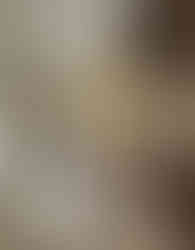























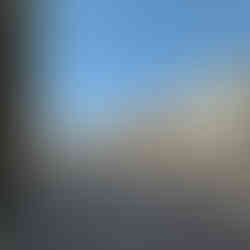

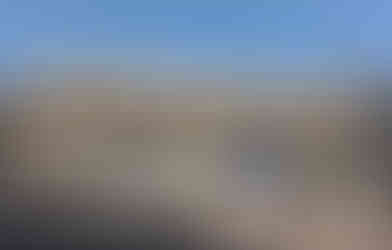



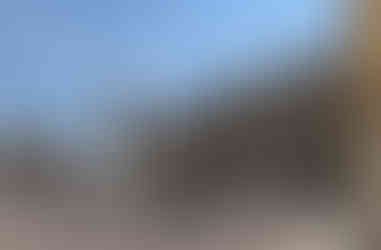






































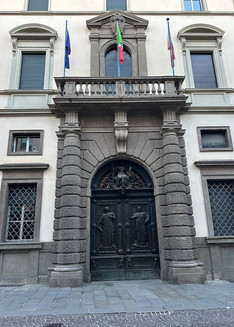







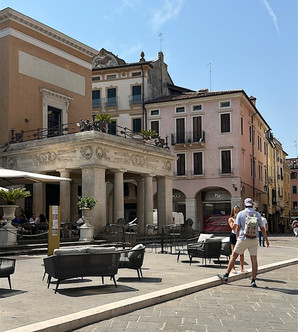








































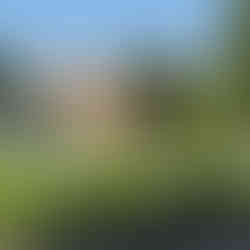











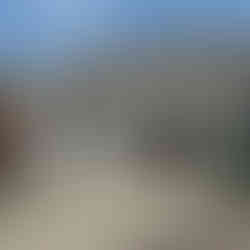




















Comments